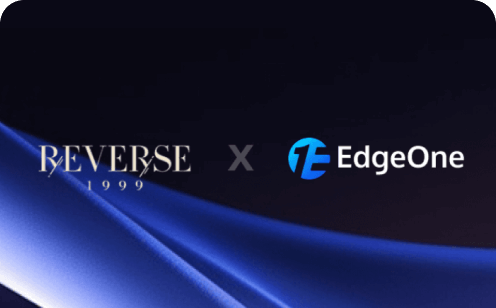Understanding Website Security Headers: Essential Protection for Modern Web Applications

Website security headers are essential components of modern web development that play a crucial role in protecting websites from various cyber threats. These headers are part of the HTTP protocol and provide an additional layer of security by specifying how browsers should handle data and interactions with a website. This article will delve into the importance of security headers, the different types available, and the best practices for their implementation.
What are HTTP Security Headers?
HTTP headers form a critical component of the request-response communication between browsers and servers. When a user navigates to a website, their browser sends an HTTP request to the server. The server responds with the requested content along with HTTP headers that provide instructions to the browser on how to handle this content.
Security headers specifically inform the browser about security policies that should be enforced while rendering and interacting with the website. They operate within the browser's security model, which follows the principle of same-origin policy and other security boundaries. By adding specific security headers, website owners can further enhance these native browser protections.
Security headers can prevent various types of attacks, including:
- Cross-site scripting (XSS)
- Clickjacking
- MIME-type sniffing
- Man-in-the-middle attacks
- Data injection attacks
- Cross-site request forgery (CSRF)
Critical Security Headers Explained
Content-Security-Policy (CSP)
Content-Security-Policy stands as perhaps the most powerful security header available today. It operates as a whitelist, specifying which resources the browser is allowed to load for a given page.
- Purpose and functionality: CSP mitigates XSS risks by controlling which scripts, styles, images, and other resources can execute on a page. By specifying trusted sources, CSP prevents malicious script injection and execution.
- Key directives and their effects:
- default-src: Serves as a fallback for other resource types
- script-src: Controls which scripts can execute
- style-src: Defines acceptable sources for stylesheets
- img-src: Restricts image sources
- connect-src: Limits origins with which the page can connect (via XHR, WebSockets, etc.)
- Implementation example:
Content-Security-Policy: default-src 'self'; script-src 'self' https://trusted.cdn.com; img-src *; style-src 'self' 'unsafe-inline';This policy allows scripts only from the origin server and trusted.cdn.com, styles from the origin with inline styles permitted, and images from any source.
HTTP Strict Transport Security (HSTS)
HSTS forces secure connections, requiring browsers to use HTTPS for all future communications with your domain.
- Enforcing secure connections: Once a browser receives the HSTS header from a website, it will automatically convert all HTTP requests to HTTPS, even before the request is sent, preventing potential downgrade attacks.
- Implementation best practices:
Strict-Transport-Security: max-age=31536000; includeSubDomains; preloadThe max-age directive specifies how long (in seconds) browsers should remember to use HTTPS exclusively, includeSubDomains applies this policy to all subdomains, and preload suggests including the domain in browsers' built-in HSTS preload lists.
X-Content-Type-Options
This simple but effective header prevents browsers from MIME-sniffing, a technique where browsers try to determine a file's content type regardless of what the server declares.
- Implementation example:
X-Content-Type-Options: nosniffBy setting this header, you ensure that browsers respect the declared content type, preventing certain types of attacks where malicious files masquerade as benign content types.
X-Frame-Options
The X-Frame-Options header controls whether a browser should be allowed to render a page in a <frame>, <iframe>, <embed> or <object>, providing protection against clickjacking attacks.
- Configuration options:
X-Frame-Options: DENY
X-Frame-Options: SAMEORIGIN
X-Frame-Options: ALLOW-FROM https://trusted-site.com/DENY prevents any domain from framing your content, SAMEORIGIN allows only pages from the same origin to frame content, and ALLOW-FROM permits specific sites to frame your content (though this option is deprecated in favor of CSP frame-ancestors).
X-XSS-Protection
While considered somewhat legacy as modern browsers implement more sophisticated XSS protections and CSP provides stronger controls, this header can still offer additional protection for users of older browsers.
X-XSS-Protection: 1; mode=blockThe value 1 enables the browser's built-in XSS filter while mode=block preventing the page from rendering if an attack is detected.
Referrer-Policy
This header controls how much referrer information should be included with requests, helping protect user privacy and prevent information leakage.
- Available policy options:
Referrer-Policy: no-referrer
Referrer-Policy: strict-origin-when-cross-origin
Referrer-Policy: same-originThe no-referrer policy omits the Referer header entirely, strict-origin-when-cross-origin sends the origin, path, and query string when performing a same-origin request, but only the origin when the protocol security level remains the same and no referrer when downgrading security, while same-origin sends a full referrer for same-origin requests only.
Permissions-Policy
Formerly known as Feature-Policy, this header allows developers to explicitly enable or disable certain browser features and APIs in their web application.
Permissions-Policy: geolocation=(), camera=(), microphone=()This example disables geolocation, camera, and microphone APIs for the page and all iframes.
Implementation Strategies
Server Configuration Examples
- Apache:
<IfModule mod_headers.c>
Header always set Content-Security-Policy "default-src 'self';"
Header always set X-Content-Type-Options "nosniff"
Header always set X-Frame-Options "SAMEORIGIN"
Header always set Strict-Transport-Security "max-age=31536000; includeSubDomains"
Header always set Referrer-Policy "strict-origin-when-cross-origin"
</IfModule>- Nginx:
server {
listen 443 ssl;
# SSL configuration here
add_header Content-Security-Policy "default-src 'self';" always;
add_header X-Content-Type-Options "nosniff" always;
add_header X-Frame-Options "SAMEORIGIN" always;
add_header Strict-Transport-Security "max-age=31536000; includeSubDomains" always;
add_header Referrer-Policy "strict-origin-when-cross-origin" always;
}- Express.js:
const helmet = require('helmet');
const express = require('express');
const app = express();
// Use helmet to set various security headers automatically
app.use(helmet());
// Or customize specific headers
app.use(helmet.contentSecurityPolicy({
directives: {
defaultSrc: ["'self'"],
scriptSrc: ["'self'", 'trusted-cdn.com']
}
}));CMS Implementation
For popular content management systems like WordPress, security headers can often be implemented via plugins such as "Security Headers" or by adding custom code to the .htaccess file or theme functions. Some hosting providers also offer security header configuration through their control panels.
Testing and Validation
After implementation, it's essential to validate your security headers using tools such as:
- Mozilla Observatory
- SecurityHeaders.com
- Chrome DevTools (Network tab)
- Online CSP validators
Advanced Header Techniques
Subresource Integrity (SRI)
SRI allows browsers to verify that resources they fetch are delivered without unexpected manipulation. By adding integrity attributes to script and link tags, you ensure that only the expected file will be executed:
<script src="https://cdn.example.com/script.js"
integrity="sha384-oqVuAfXRKap7fdgcCY5uykM6+R9GqQ8K/uxy9rx7HNQlGYl1kPzQho1wx4JwY8wC"
crossorigin="anonymous"></script>Expect-CT for Certificate Transparency
Expect-CT: max-age=86400, enforce, report-uri="https://example.com/report"This header enforces Certificate Transparency requirements, helping detect and prevent the use of misissued SSL certificates for your domain.
Cross-Origin Resource Sharing (CORS) Headers
CORS headers control how web applications running at one origin can request resources from a different origin:
Access-Control-Allow-Origin: https://trusted-site.com
Access-Control-Allow-Methods: GET, POST, OPTIONS
Access-Control-Allow-Headers: Content-Type, AuthorizationClear-Site-Data
This powerful header clears browsing data (cookies, storage, cache) associated with the website:
Clear-Site-Data: "cache", "cookies", "storage"This is particularly useful for logout functionality or privacy controls.
Common Challenges and Solutions
Balancing Security with Functionality
One of the biggest challenges in implementing robust security headers is maintaining website functionality. Strict policies like CSP can break features like inline JavaScript, third-party widgets, or analytics. Solutions include:
- Implementing CSP gradually, starting with report-only mode
- Using nonces or hashes for inline scripts that can't be moved to external files
- Carefully auditing all content sources and required functionalities
Third-Party Content Integration
Modern websites often rely on multiple third-party services, from analytics to social media widgets. To maintain security while using these services:
- Maintain a comprehensive list of all required external domains
- Regularly audit third-party content for changes in source domains
- Consider using Subresource Integrity for third-party scripts when possible
- Use CSP reporting to identify blocked resources that may need whitelisting
Legacy Browser Support
While most modern browsers support security headers, you may need to accommodate older browsers:
- Implement graceful degradation for legacy browsers
- Test in multiple browser versions
- Use polyfills where appropriate
- Consider the risks of supporting very old, insecure browsers
Measuring Effectiveness and Compliance
Security Header Scanning Tools
Regular scanning helps ensure your headers remain effective:
- OWASP ZAP (Zed Attack Proxy)
- Qualys SSL Labs Server Test
- Lighthouse security audits
Compliance Requirements
Security headers are increasingly relevant to compliance frameworks:
- PCI DSS requirements for secure coding practices
- GDPR considerations for data protection
- HIPAA security requirements for healthcare sites
Future Trends in Security Headers
The landscape of security headers continues to evolve with:
- Greater emphasis on privacy-enhancing headers
- Deprecation of older headers in favor of more comprehensive solutions
- Browser vendors implementing stricter default security policies
- Integration with emerging standards like Origin Policy
Implementation Checklist of Security Headers
Implementing HTTP security headers represents one of the most cost-effective security measures available to website owners. The proper configuration of these headers significantly reduces the attack surface for common web vulnerabilities and demonstrates a commitment to security best practices.
- Deploy HTTPS across your entire site
- Implement HSTS to enforce secure connections
- Configure Content-Security-Policy (start with report-only mode)
- Add X-Content-Type-Options to prevent MIME sniffing
- Implement Referrer-Policy to control information leakage
- Configure X-Frame-Options to prevent clickjacking
- Add Permissions-Policy to control feature usage
- Test your implementation using security scanners
- Monitor CSP reports for potential issues
- Regularly review and update your security headers
By following this comprehensive approach to security headers, organizations can significantly enhance their web security posture with relatively minimal effort and cost, protecting both their users and their own digital assets from a wide range of common attacks.
Conclusion
Tencent EdgeOne provides an acceleration and security solution based on Tencent edge nodes and provides security protection services such as WAF and Anti-DDoS. Nodes identify and block various layer-3/4/7 attack requests, cleanse DDoS attack traffic, and use the smart AI engine and bot policy engine to analyze the behaviors of web, bot, and CC attacks and update attack-blocking policies. This helps prevent malicious requests from reaching your origin servers and guarantees smooth and stable access to your business. Sign up and start a free trial with us!

